An unmanned satellite A and a spacecraft B are orbiting around the earth in the same circular orbit as shown.
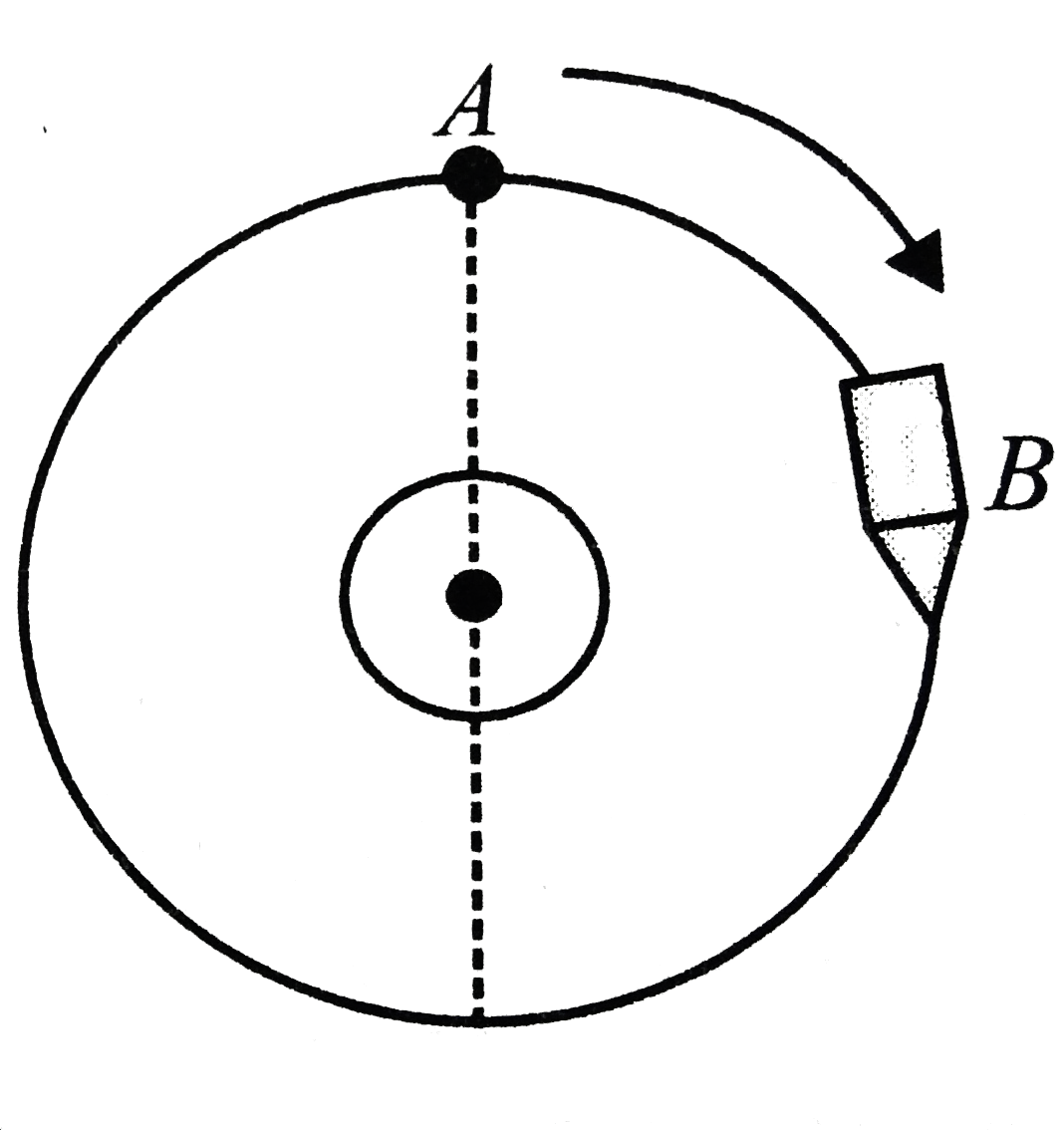 The spacecraft is ahead of the satellite by some time. Let us consider that some technical problem has arisen in the satellite and the astronaut from B has made it correct. For this to be done docking of two (A and B) is required (in layman terms connecting A and B). To achieve this, the rockets of A have been fired in forward direction and docking takes place as shown in the figure below:
The spacecraft is ahead of the satellite by some time. Let us consider that some technical problem has arisen in the satellite and the astronaut from B has made it correct. For this to be done docking of two (A and B) is required (in layman terms connecting A and B). To achieve this, the rockets of A have been fired in forward direction and docking takes place as shown in the figure below:
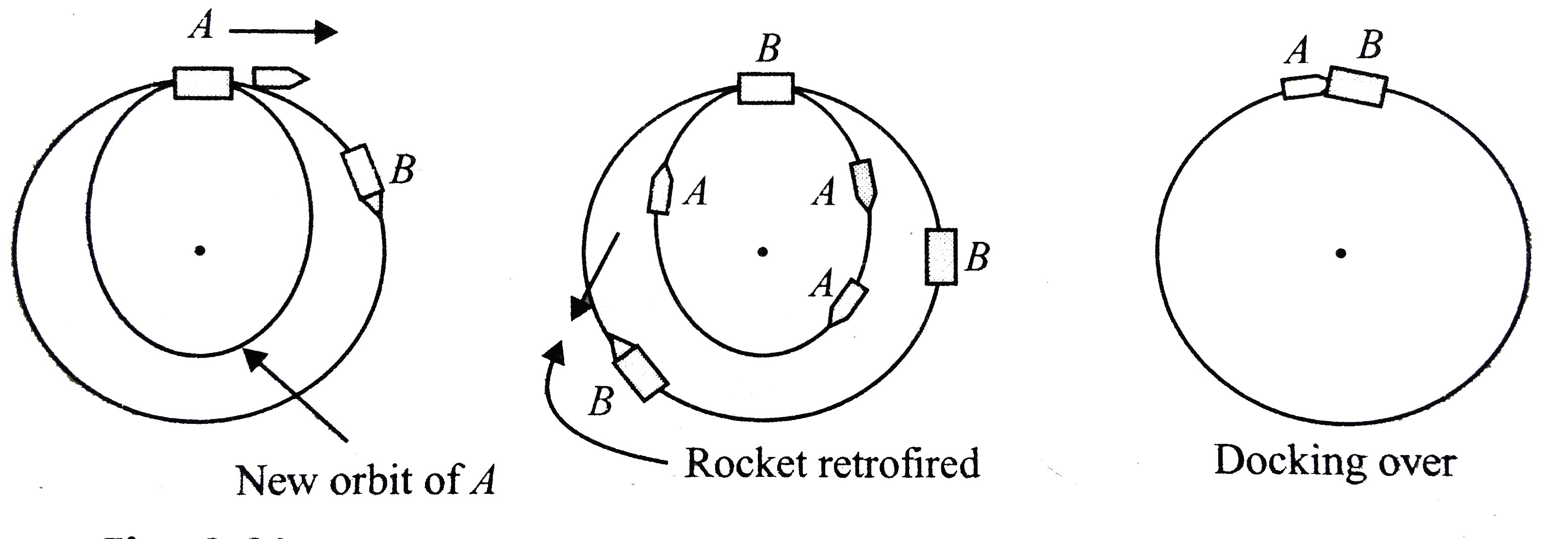
Take mass of the earth =5.98×1024kg
Radius of the earth =6400km
Orbital radius =9600km
Mass of satellite A=320kg
Mass of spacecraft =3200kg
Assume that initially spacecraft B leads satellite A by 100s, i.e., A arrives at any particle position after 100s of B’s arrival. Based on the above information answer the following questions
The initial total energy and time period of satellite are, respectively,
38s
138s
Lags by 38s
Lags by 138s
The correct Answer is:A
Initially the time periods of the satellite and the spacedraft were same equal to 9358s and after firing rockets of A, it acquires, slower and faster orbit and A will come to initial position in time period of 9220s while B will take 9358s to come to its initial position or (9358−100)s to come to the original position of A as 100s is the initial time gap between the two.
It means now A leads B by (9358−100−9220)=38s.
Topper's Solved these Questions
- GRAVITATIONBook:CENGAGE PHYSICS ENGLISHChapter:GRAVITATIONExercise:Integer
Explore 5 Videos
- GRAVITATIONBook:CENGAGE PHYSICS ENGLISHChapter:GRAVITATIONExercise:Fill In The Blanks
Explore 5 Videos
- GRAVITATIONBook:CENGAGE PHYSICS ENGLISHChapter:GRAVITATIONExercise:Assertion- Reasoning
Explore 13 Videos
- FLUID MECHANICSBook:CENGAGE PHYSICS ENGLISHChapter:FLUID MECHANICSExercise:INTEGER_TYPE
Explore 1 Video
- KINEMATICS-1Book:CENGAGE PHYSICS ENGLISHChapter:KINEMATICS-1Exercise:Integer
Explore 9 Videos
Similar Questions
A particle of mass m is subjected to an attractive central force of magnitude k/r2, k being a constant. If at the instant when the particle is at an extreme position in its closed orbit, at a distance a from the centre of force, its speed is (k/2ma), if the distance of other extreme position is b. Then a/b is
View SolutionAccording to Kepler's second law, the radius vector to a planet from the Sun sweeps out equal areas in equal intervals of time. This law is a consequence of the conservation of ______________.
View SolutionStatement 1: The value of escape velocity from the surface of earth at 30∘ and 60∘ is v1=2ve,v2=2/3ve.
Statement II: The value of escape velocity is independent of angle of projection.
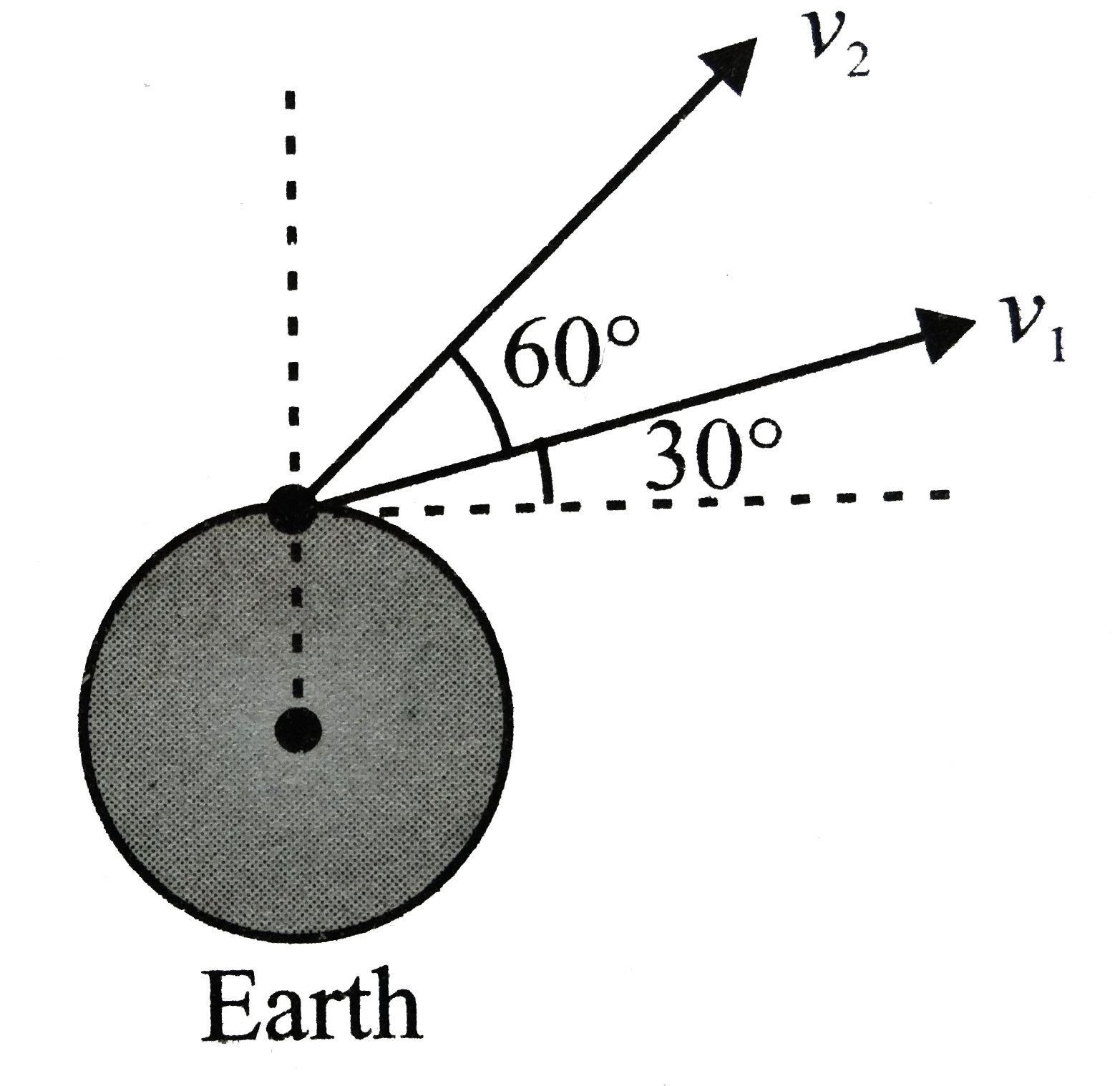
View SolutionA cyclindrical vessel of height 500 mm has an orifice (small hole) at its bottom. The orifice is initially closed any water is filled in ti upto height H.Now the top is completely sealed with a cap and the orifice at the bottom is opened .Some water comes out from the orifice and the water level in the vessel becomes steady with height of water column being 200mm. The fall in height (in mm) of water level due to opening of the orifice is [ Take atmospheric pressure = 1.0×105Nm2, density of water = 1000kgm3. Neglect any effect of surface tension.]
View SolutionA man in a lift ascending with an upward acceleration a throws a ball vertically upwards with a velocity v with respect to himself and catches it after t1 seconds. After wards when the lift is descending with the same acceleration a acting downwards the man again throws the ball vertically upwards with the same velocity with respect to him and catches it after t2 seconds?
View SolutionAn unmanned satellite A and a spacecraft B are orbiting around the earth in the same circular orbit as shown.
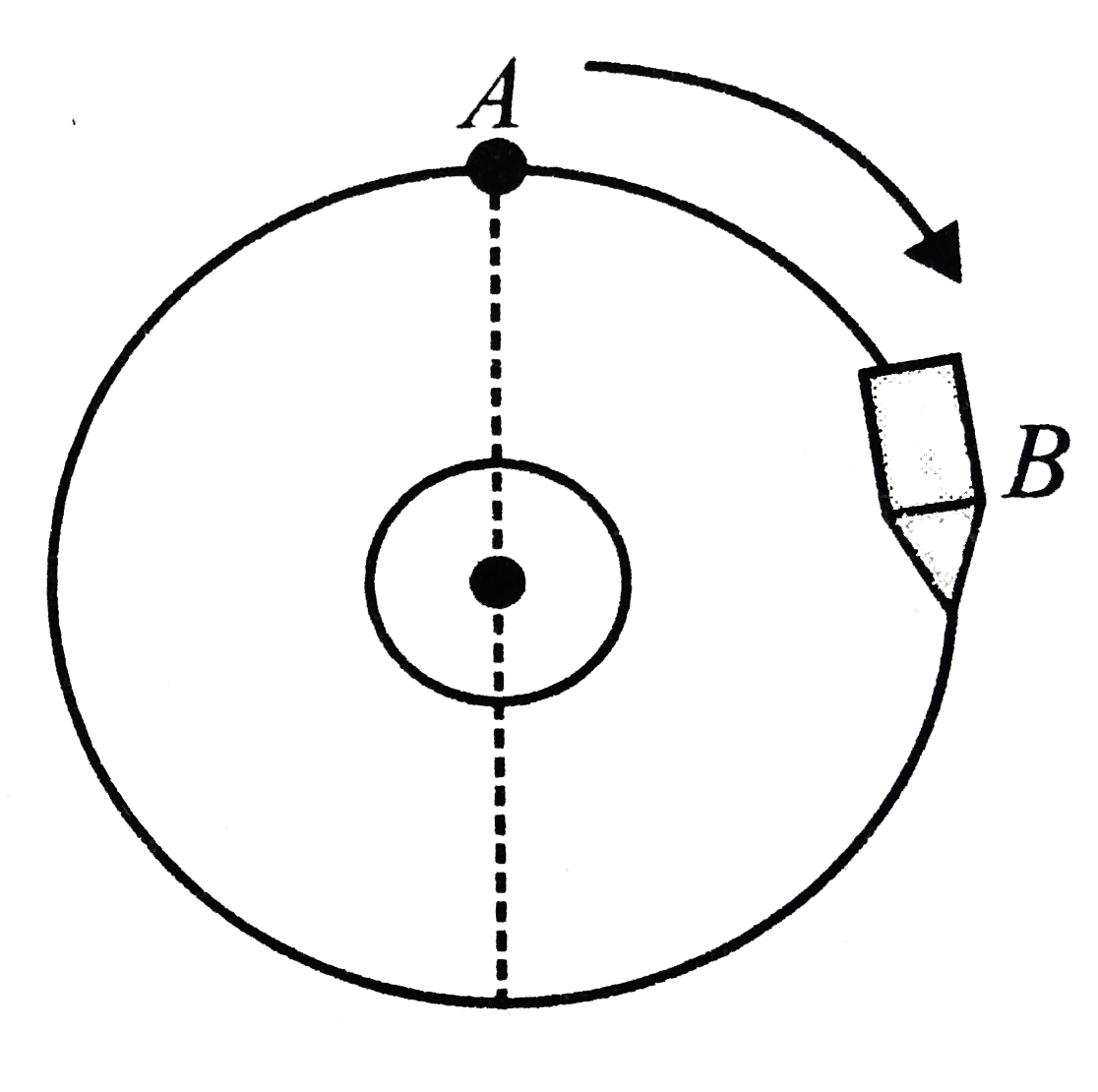
The spacecraft is ahead of the satellite by some time. Let us consider that some technical problem has arisen in the satellite and the astronaut from B has made it correct. For this to be done docking of two (A and B) is required (in layman terms connecting A and B). To achieve this, the rockets of A have been fired in forward direction and docking takes place as shown in the figure below:
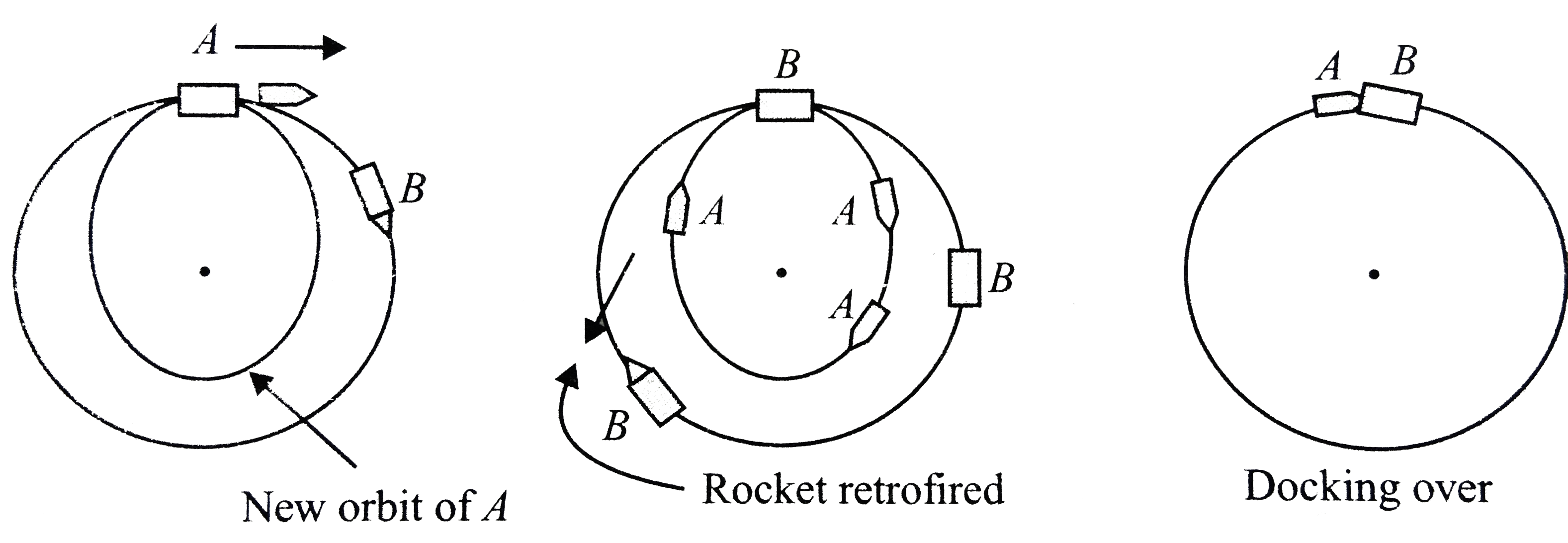
Take mass of the earth =5.98×1024kg
Radius of the earth =6400km
Orbital radius =9600km
Mass of satellite A=320kg
Mass of spacecraft =3200kg
Assume that initially spacecraft B leads satellite A by 100s, i.e., A arrives at any particle position after 100s of B’s arrival. Based on the above information answer the following questions.
To dock A and B in the above-described situation, one can use the rocket system of either one, i.e., either of A or of B. To accomplish docking in the minimum possible time which is the best way?
View SolutionAn unmanned satellite A and a spacecraft B are orbiting around the earth in the same circular orbit as shown.
 The spacecraft is ahead of the satellite by some time. Let us consider that some technical problem has arisen in the satellite and the astronaut from B has made it correct. For this to be done docking of two (A and B) is required (in layman terms connecting A and B). To achieve this, the rockets of A have been fired in forward direction and docking takes place as shown in the figure below:
The spacecraft is ahead of the satellite by some time. Let us consider that some technical problem has arisen in the satellite and the astronaut from B has made it correct. For this to be done docking of two (A and B) is required (in layman terms connecting A and B). To achieve this, the rockets of A have been fired in forward direction and docking takes place as shown in the figure below:

Take mass of the earth =5.98×1024kg
Radius of the earth =6400km
Orbital radius =9600km
Mass of satellite A=320kg
Mass of spacecraft =3200kg
Assume that initially spacecraft B leads satellite A by 100s, i.e., A arrives at any particle position after 100s of B’s arrival. Based on the above information answer the following questions
The initial total energy and time period of satellite are, respectively,
View SolutionAn unmanned satellite A and a spacecraft B are orbiting around the earth in the same circular orbit as shown. The spacecraft is ahead of the satellite by some time. Let us consider that some technical problem has arisen in the satellite and the astronaut from B has made it correct. For this to be done docking of two ( A and B ) is required (in layman terms connecting A and B ). To achieve this, the rockets of A have been fired in forward direction and docking takes place as shown in the figure below: Take mass of the earth =5.98xx10^(24)kg Radius of the earth =6400 km Orbital radius =9600km Mass of satellite A=320 kg Mass of spacecraft =3200 kg Assume that initially spacecraft B leads satellite A by 100s , i.e., A arrives at any particle position after 100 s of B’s arrival. Based on the above information answer the following questions. If from the base station, the rocket system of A has been operated, so that its rocket has been fired in forward direction thus reducing the speed of A by 0.5% , then which of the following will happen?
View SolutionAn unmanned satellite A and a spacecraft B are orbiting around the earth in the same circular orbit as shown. The spacecraft is ahead of the satellite by some time. Let us consider that some technical problem has arisen in the satellite and the astronaut from B has made it correct. For this to be done docking of two ( A and B ) is required (in layman terms connecting A and B ). To achieve this, the rockets of A have been fired in forward direction and docking takes place as shown in the figure below: Take mass of the earth =5.98xx10^(24)kg Radius of the earth =6400 km Orbital radius =9600km Mass of satellite A=320 kg Mass of spacecraft =3200 kg Assume that initially spacecraft B leads satellite A by 100s , i.e., A arrives at any particle position after 100 s of B’s arrival. Based on the above information answer the following questions. By doing the above operation, now by how much time is the satellite leading the spacecraft?
View SolutionAn unmanned satellite A and a spacecraft B are orbiting around the earth in the same circular orbit as shown. The spacecraft is ahead of the satellite by some time. Let us consider that some technical problem has arisen in the satellite and the astronaut from B has made it correct. For this to be done docking of two ( A and B ) is required (in layman terms connecting A and B ). To achieve this, the rockets of A have been fired in forward direction and docking takes place as shown in the figure below: Take mass of the earth =5.98xx10^(24)kg Radius of the earth =6400 km Orbital radius =9600km Mass of satellite A=320 kg Mass of spacecraft =3200 kg Assume that initially spacecraft B leads satellite A by 100s , i.e., A arrives at any particle position after 100 s of B’s arrival. Based on the above information answer the following questions. After once returning to the original point, i.e., the place from where the rockets have been fired, in which direction and with what extent the rockets have to be fired from the satellite to again come back in the original orbit?
View SolutionThe radii of circular orbits of two satellite A and B of the earth are 4R and R, respectively. If the speed of satellite A is 3v, then the speed of satellite B will be
View SolutionSatellite A is following a circular path of radius a around the earth another satellite B follows an elliptical path around the earth. The two satellites have same mechanical energy and their orbits intersect. Find the speed of satellite B at the point where its path intersects with the circular orbit of A. Take mass of earth to be M.
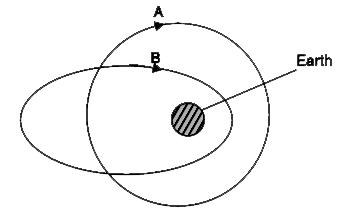
View Solutionपृथ्वी के दो उपग्रहों A तथा B की वृत्तीय कक्षाओं की त्रिज्याएँ क्रमशः 4R तथा R हैं । यदि उपग्रह की चाल 3y हो तो उपग्रह B की चाल होगी -
View SolutionTwo satellites A and B are orbiting around the earth in circular orbits of the same radius the mass of A is 16 times that of B. What is the ratio of the period of revolution of B to that of A?
View SolutionThe radii of circular orbits of two satellites A and B of the earth, are 4R and R, respectively. If the speed of satellite A is 3V, then the speed of satellite B will be :
View SolutionThe radius of circular orbits of two satellites A and B of the earth, are 4R and R, respectively. If the speed of satellite A is 3V, then the speed of satellite B will be :
View Solution
